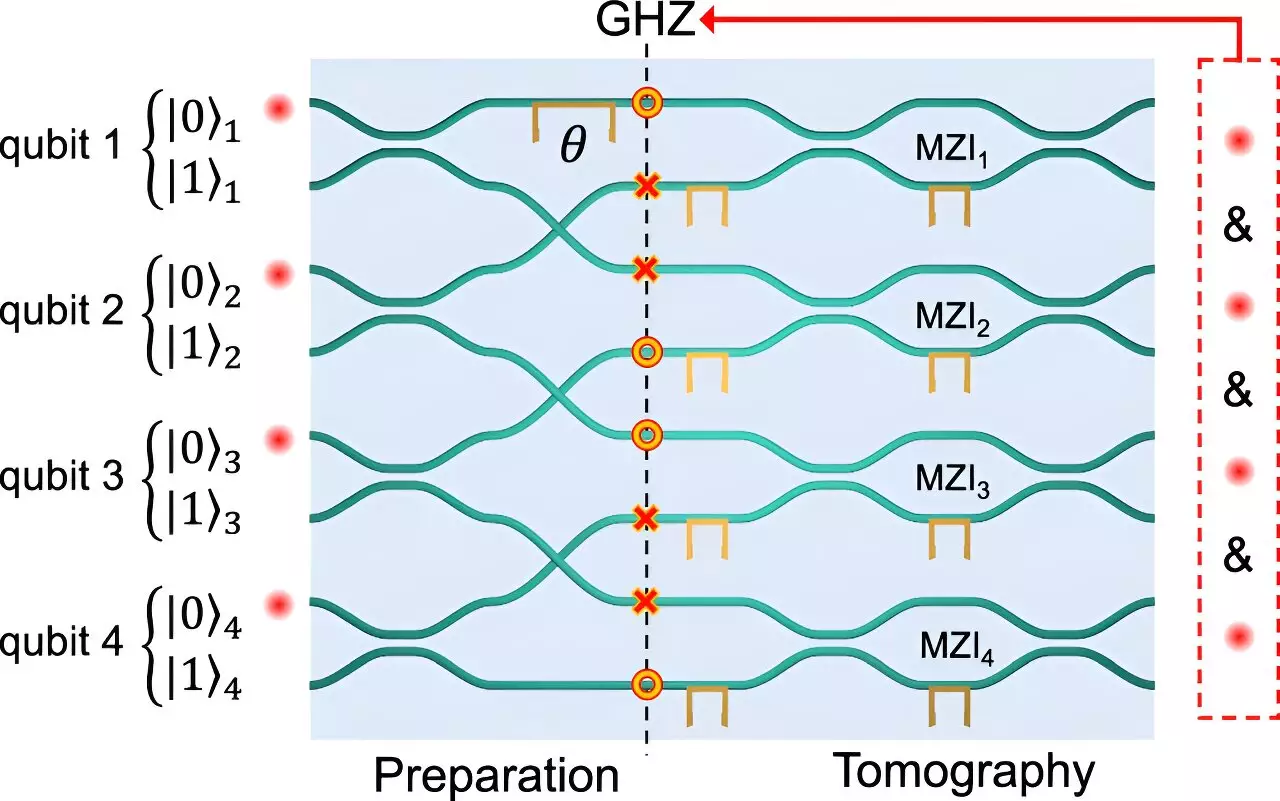In the rapidly evolving field of cybersecurity, traditional encryption methods are increasingly being challenged by the advancements in quantum computing. Unlike classical encryption which relies on complex mathematical algorithms, quantum encryption hinges on the physical principles of quantum mechanics, offering a fundamentally different approach to secure data transmission. This radical shift is crucial as quantum computers come closer to realizing their potential, with the capability to break conventional encryption systems in mere seconds. Recognizing this urgent need, researchers are focusing on developing quantum security protocols resistant to the unprecedented power of future quantum machines.
At the heart of quantum encryption lies the concept of quantum states, particularly entangled states such as the Greenberger-Horne-Zeilinger (GHZ) state. This fundamental construct involves multiple particles that are intertwined in such a way that the state of one particle instantaneously affects the state of another, regardless of distance. This property is what allows for secure communications. When an unauthorized attempt is made to intercept or measure these quantum states, the very act of observation alters the state, making eavesdropping detectable. This is a significant advancement compared to classical systems, which can be susceptible to breaches without immediate detection.
A notable breakthrough in this area comes from recent research efforts that integrate quantum dot technology with glass photonic circuits. These innovations, achieved at the Federal University of São Carlos in Brazil and the Polytechnic University of Milan in Italy, lead to the generation of high-fidelity entangled states on photonic chips. This is a pivotal step for quantum communication as it facilitates the manipulation and transmission of quantum states on a practical scale. Essentially, researchers have utilized femtosecond laser machining to create three-dimensional waveguides, enhancing the control over photon behavior and making the implementation of quantum encryption systems more feasible.
To comprehend the unique nature of quantum entanglement, researchers use analogies that resonate with everyday experiences. One such illustration involves the concept of tossing four coins. In a classical context, each coin can independently show heads or tails. However, within an entangled GHZ state, where all coins are linked, observing any single coin determines the states of the others. For instance, if one coin is found to be heads, the remaining three must also reveal heads. This analogy effectively encapsulates the interdependence of entangled particles, highlighting the strengths of quantum states in safeguarding communications.
The potential applications of entangled GHZ states are vast, particularly in the realm of secure data sharing. Quantum secret sharing systems capitalize on the unique properties of entangled particles, allowing a trusted party to distribute a cryptographic key among multiple participants. Any unauthorized attempt to intercept the quantum data alters the system’s correlations, flagging potential breaches. This immediate detection capability distinguishes quantum encryption from classical methods, which often leave sensitive information vulnerable to increasingly sophisticated cyber threats.
As researchers and engineers continue to unveil the practicality of utilizing high-fidelity entangled states in quantum devices, the pathway toward embedding these systems into everyday communications becomes clearer. Such advancements are expected to redefine the security landscape of digital communication. Consequently, organizations handling sensitive data can anticipate enhanced protection against invasive threats. As quantum technologies mature, they promise not only robust security solutions but also improved efficiency in information systems.
The ongoing exploration of quantum encryption underscores a transformative journey into secure communication. As quantum computers develop and classical encryption becomes increasingly vulnerable, the urgency for quantum-secure protocols escalates. With innovations such as GHZ states and photonic circuits at the forefront, a new chapter in cybersecurity is unfolding—one that holds the potential to safeguard information in connection-centric environments. As we advance further into this quantum future, the significance of these developments cannot be overstated, paving the way for secure, reliable, and efficient communication infrastructures.


Leave a Reply